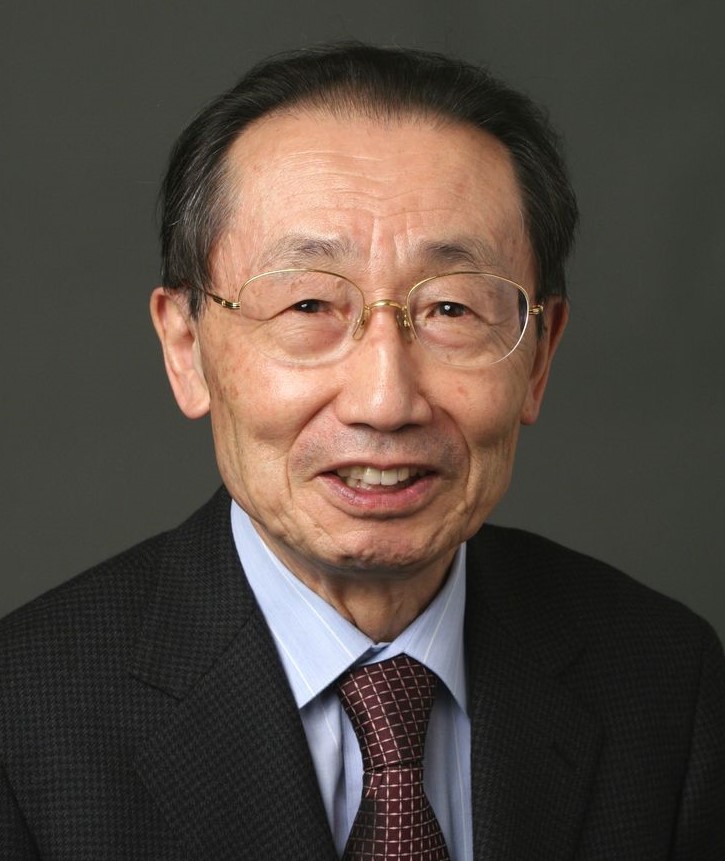Toshio Narahashi, PhD, 1927-2013
By Emma Florio, Archives & Research Specialist
 |
|
Narahashi in his lab at Northwestern, ca. 1986. From Ward Rounds, Winter 1986-87.
|
Toshio Narahashi was born Toshio Ishii in Tokyo in 1927. He earned a degree in veterinary medicine from the University of Tokyo in 1948. The following year he began 12 years of work at the university’s Laboratory of Applied Entomology, where he studied the mechanisms of action of insecticides and their effects on the nervous systems of insects, and thus other animals. In 1955 he married Kyoko Narahashi. Because her family did not have any male heirs, Toshio was adopted into the Narahashi family in a traditional Japanese practice called mukoyōshi, taking the family’s name as his own. The couple would go on to have two children.
The University of Tokyo awarded Narahashi a doctorate in neurotoxicology in 1960, based on the 26 full-length publications he had authored while working in the entomology laboratory. He came to the United States in 1961 to work as a postdoctoral researcher in the Department of Physiology at the University of Chicago. From there he went to Duke University, where he worked for 14 years, rising through the ranks from an assistant professor to Vice Chairman of the Department of Physiology and Pharmacology.
While working at Duke, Narahashi and biophysicist John W. Moore discovered the mechanism of action of tetrodotoxin, the neurotoxin found in pufferfish that immobilizes part of the nervous system. This work helped to elevate the study of toxins beyond biological curiosity to become a prominent research field. For this reason, Narahashi is described as the “founding father” of both neurotoxicology, the study of toxins that are destructive to nerve tissue, and of cellular neuropharmacology, the study of the biological effects of toxins and drugs at the cell membrane level. These grand titles belied a sense of humor noted by many who knew him; for example, he began his and Moore’s article on tetrodotoxin with a description of the last scene of the James Bond novel From Russia with Love in which Bond is poisoned with tetrodotoxin.
.jpg) |
|
Narahashi later in life. From NeuroToxicology, 2013.
|
In 1977, Narahashi was recruited to Northwestern University Medical School as chair of the Department of Pharmacology. During his 17 years as chair, he expanded and enhanced the department until, by the early 1990s, it was ranked #1 in the United States for citations per publications. Many remembered him for his concern for his students, postdocs, and faculty—even during his tenure as chair he would make time to meet weekly with all of his students and researchers. Two of his former postdocs remembered him always beginning these meetings by asking “How's the thing?” which they describe as “a disarmingly charming corruption of an idiomatic American greeting, which has become a sort-of secret handshake between former students and postdocs” (Salgado & Zhao, 2017).
Narahashi stepped down as chair of pharmacology in 1994, in order to concentrate on his research and teaching interests, which included drugs that block nerves such as local anesthetics, drugs for epilepsy and Alzheimer’s disease, and the effects of alcohol on neuron function. He was subsequently appointed the John Evans Professor of Pharmacology, one of a group of prestigious professorships appointed directly by the University President, named after a controversial founder of Northwestern University. He held the position until his death on April 21, 2013, at age 86. Just over a month earlier, on March 1, Northwestern had honored him with a symposium titled “Visionary Founding Father of the Modern Pharmacology and Neurotoxicology of Ion Channels." To this day, the Department of Pharmacology hosts the annual Toshio Narahashi Lecture in honor of the man whom friend and colleague Jean Marie Cranmer, editor in chief of the journal NeuroToxicology, remembered as “the consummate serious scientist” who nevertheless “really knew how to enjoy life” (Stafford, 2013).
Selected References
Atchison, Bill. “Obituary: Toshio Narahashi.” Last modified April 21, 2013.
Salgado, Vincent L., and Xilong Zhao. “Toshio Narahashi: Life and legacy of the founding father of cellular neuropharmacology.” NeuroToxicology 60 (May 2017).
Stafford, Ned. “Toshio Narahashi: The father of cellular neuropharmacology.” The BMJ 347 (July 8, 2013).
Updated: May 2, 2024